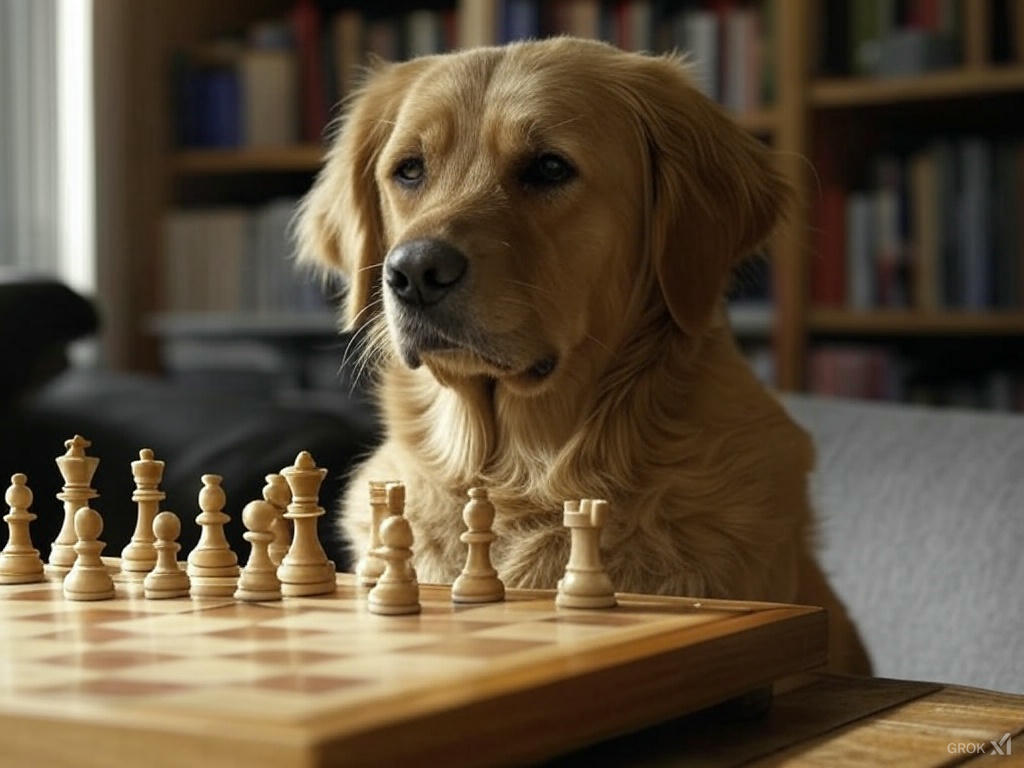What if you could transform your dog’s behavior with simple and effective techniques, even with your busy schedule?
It might seem impossible, but positive reinforcement can work wonders.
This approach not only fosters a loving bond between you and your dog but also promotes a well-behaved companion.
Let’s walk through some tips that will ultimately make your life—and your dog’s—much easier.
Understanding Positive Reinforcement
Have you heard about the science behind positive reinforcement?
This method involves rewarding your dog for good behavior, making it more likely that they will repeat that behavior in the future.
What is Positive Reinforcement Exactly?
Positive reinforcement is a training technique where you reward your dog for desired behaviors.
Rewards can include treats, praise, toys, or even playtime.
By focusing on what your dog does right rather than correcting unwanted behaviors, you build a more positive interaction.
Why is This Training Essential for Busy Professionals?
For busy professionals, time is often short, and the last thing you want is to spend hours correcting unwanted behavior.
By using positive reinforcement, you can train effectively in short, focused sessions that fit into your hectic schedule.
This means less frustration for both you and your dog when you’re trying to reinforce good habits.
How Does Positive Reinforcement Work in Practice?
Whenever your dog performs a desired behavior, you give them a reward. For instance, if your dog sits on command, you immediately offer a treat.
This immediate feedback helps them learn quickly what is expected of them. The more you practice, the stronger the association between the behavior and the reward becomes.
Daily Habits for Successful Training
What daily habits can you adopt to integrate positive reinforcement into your routine?
It doesn’t have to be overwhelming.
Here are some practical steps to help you maintain a consistent training regime while managing your busy life.
Can Consistency Really Make a Difference?
Absolutely! Consistency in rewarding desired behaviors is vital.
If you reward your dog sporadically, they may become confused about what actions merit praise.
Establish a set routine; this reinforces learning for your dog and makes training smoother.
How Can You Incorporate Training into Daily Life?
You don’t have to set aside a special hour for training. Instead, use everyday moments.
For example, when you let your dog outside, ask them to sit before you open the door.
This brief interaction can turn routine moments into opportunities for training, thus utilizing your time efficiently.
Are Short Sessions More Beneficial?
Short training sessions, lasting about 5 to 10 minutes, are often more effective than lengthy ones. Dogs, like humans, can lose focus if training drags on.
Frequent, short sessions keep training engaging and enjoyable for both of you.

Ideal Tools for Positive Reinforcement
What tools do you need to implement effective positive reinforcement? A few essential items can help you get started on the right foot.
What’s the Best Type of Treat?
Look for treats that your dog absolutely loves. It could be small pieces of chicken, cheese, or a favorite commercial treat.
Ensure they are small enough that your dog can eat them quickly. The idea is to keep the momentum going during training.
Is a Clicker Essential for Training?
Using a clicker can be an excellent way to pinpoint the exact moment your dog does something right.
The sound of the clicker becomes associated with the treat. This clarity helps your dog understand what behavior is being rewarded.
Should You Use Toys as Rewards?
Absolutely! Some dogs are more motivated by toys than food.
If your dog loves to play fetch or tug-of-war, use their favorite toys as a reward for good behavior.
Feel free to alternate between treats and toys to keep things exciting.
Training Commands and Techniques
Which commands should you start with, and what techniques are most effective? Here are some foundational skills and methods to help your dog learn essential obedience.
What Are the Basic Commands Your Dog Should Learn?
Start with basic commands like “sit,” “stay,” “come,” “down,” and “leave it.”
Each command serves a purpose and promotes good behavior, making outings with your dog more enjoyable.
How Can You Teach Your Dog ‘Sit’?
To teach “sit,” hold a treat above your dog’s nose and move it back over their head. As their head goes up, their bottom naturally goes down.
Once their backside is on the ground, immediately reward them. In just a few tries, your dog will connect the command with the action.
Why is ‘Stay’ Important?
The “stay” command can be crucial for keeping your dog safe. Teach it by having your dog sit, then step back while holding your palm up as if signaling “stop.”
If they hold the position, reward them promptly. Gradually increase the distance as they become proficient.
Troubleshooting Common Challenges
What should you do when things don’t go as planned? Every dog is different, and challenges can emerge during training.
What if Your Dog Isn’t Responding to Treats?
Sometimes, a dog may be uninterested in treats, possibly due to distractions or because they aren’t hungry.
If this happens, evaluate the situation. Change your treat, or try training in a quieter environment until your dog focuses better.
How Can You Handle Distractions?
Training in a busy area can divert your dog’s attention away from you.
Begin in a quiet setting and gradually introduce more distractions as your dog becomes more skilled.
This way, you train them to remain focused even when there are tempting sights and sounds.
Is it Okay to Get Frustrated?
Feeling frustrated is natural, especially when things aren’t progressing as you’d hoped.
Remember to take a break, reset, and return with a positive attitude.
Your dog can sense your emotions, and keeping training sessions upbeat will yield better results.
Time Management Tips for Busy Professionals
How can you effectively manage your time to ensure you keep training a regular part of your routine?
Can Scheduling Help with Training?
Absolutely! Set aside specific times for training in your daily schedule. Even five minutes on your lunch break can be effective.
Treat these as appointments for your dog’s education, making them a priority.
Is It Beneficial to Involve Your Family?
Getting everyone involved can create a more cohesive training experience.
When family members consistently use the same commands and reward methods, your dog learns more effectively.
How Important is Patience in Dog Training?
Patience is one of the cornerstones of successful dog training.
Every dog learns at their own pace, and it’s essential to remember that consistency and encouragement lead to positive outcomes.
Long-term Benefits of Positive Reinforcement
What long-term benefits can you expect from positive reinforcement methods? Beyond immediate obedience, the effects can prolong the bond between you and your furry friend.
How Does It Strengthen Your Relationship with Your Dog?
Using positive reinforcement fosters trust and connection.
Your dog learns that good behavior leads to positive experiences, making them more eager to please you. This mutual respect leads to a deeper bond.
Can It Help with Behavioral Issues?
Yes, positive reinforcement is an effective way to address behavioral problems like excessive barking, jumping, or digging.
By redirecting your dog’s energy into good behavior through rewards, you can replace those unwanted habits with positive actions.
What about Your Dog’s Mental Health?
Training through positive reinforcement stimulates your dog’s mind, creating a sense of accomplishment.
This mental engagement can alleviate boredom and anxiety, contributing to a happier, well-adjusted dog.
FAQs
- What is the best age to start training my dog? Starting as early as eight weeks old is ideal, but a dog of any age can learn with the right approach.
- How do I know if the treat is effective? If your dog is eager to work for the treat and exhibits motivated behavior, it’s likely effective.
- Can I use verbal praise as a reward? Yes! Many dogs thrive on verbal praise, petting, and affection just as much as they do with treats.
- What should I do if my dog doesn’t respond? Try a different treat, change the environment, or might need to reassess your training methods.
- Is it too late to train a rescue dog? Not at all! Rescue dogs can learn at any age; it may take time and patience, but positive reinforcement is highly effective.
- What can I do if my dog keeps getting distracted? Train in a quiet area initially, and gradually increase distractions as your dog gets better.
- How can I measure progress in training? Keep a journal of commands your dog learns and the duration it takes to master them, observing patterns in their learning.
- Are there group classes for dog training? Yes, many local pet stores or veterinary clinics offer classes that focus on positive reinforcement techniques.
- What if my dog refuses to give the command? Go back to basics and reward small steps toward the desired behavior, gradually building up their understanding.
- Can I combine positive reinforcement with other training methods? While you can use various methods, ensure that you’re primarily consistent with positive reinforcement for the best results.
As you embark on this rewarding journey, remember that every little step contributes to a well-behaved dog.
Positive reinforcement is, above all, about fostering kindness and cooperation. Take those tiny moments in your day and turn them into something beautiful for you both.
Commit to regular, short training sessions, employ the right rewards, and see the transformation unfold—your hardworking companion is just waiting for the chance to shine.
So why not start today? Grab those treats, set aside a few minutes, and watch how your relationship with your furry friend blossoms.
